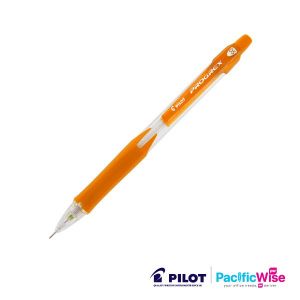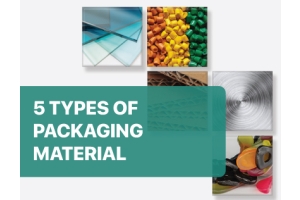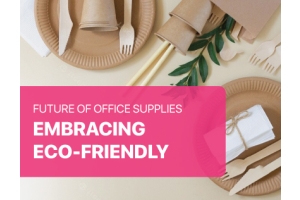Why Mechanical Pencils Are Better Than Wooden Pencils

Pencils are the most important item of all school supplies. Even though any writing utensil is okay to use for school, an important question that everyone should have when buying school supplies is, what type of pencil is better? The normal wooden pencils, or the plastic mechanical pencils?
Both pencils use graphite lead, made by combining graphite and clay, and then baking it around 1,500 degrees Fahrenheit. The lead of the pencils may be the same, but the materials that make up the actual pencil are much different.
Wooden pencils get their wood from the Incense Cedar tree, a wood that is soft enough to sharpen, but hard enough to not break when writing with it. Mechanical pencils on the other hand are made with plastic and other metals. Another factor that comes into deciding what pencil is the best is the cost. Normal wooden pencils have the advantage of cheapness due to only needing the pencils and the sharpener in order to use it. Mechanical pencils suffer in this category due to the upkeep needed to keep using the pencil.
Wooden or Standard Pencils
Along with harkening back to our school days, the wooden pencil has a natural feel that brings out the nature-lover in all of us. Other benefits:
• Wooden pencils are inexpensive, so losing or sharing is no problem.
• Depending upon how diligently you sharpen, you can adjust the point size to suit your preference.
• Sharpening a wooden pencil is a tactile ritual that some find appealing, including students looking for a reason to get out of their seats.
• Due to the wood casing, the lead breaks less easily than lead in a mechanical pencil.
Pencil Lead Grades / Hardness
The pencils lead, or hardness grade scale in Europe are from 9B – 9H. There is no standardization for this, so the pencils from different manufacturers will be slightly different. Regarding the Pencil Lead Grade Hardness Chart, H refers to the Hardness and B to Blackness of the lead, and F is Firm. H graded leads are very smudge-resistant and produce sharp lines. B lead is softer and smoother to write and draw with but smudges easily.
| Pencil No. | Pencil Lead Grade Hardness | Application |
| 9H – 6H | Strong lead and a very light grey | Used for writing or drawing but for specialized things such as map-making |
| 5H – 3H | Very hard lead | Used for technical drawing, charts and Graphs |
| 2H & H | Hard lead | Used for technical drawing and mathematics |
| F & HB | Medium lead | Used for writing and drawing lines |
| B – 3B | Soft lead | Used for writing |
| 4B – 9B | Very soft dark lead | Used for drawing and sketching |
Mechanical Pencils
When consistency is the name of the game, the mechanical pencil comes through. Among the advantages of this ever-popular pencil type:
• Because the mechanical pencil comes loaded with lead in the size you want, and advanced by a simple click or twist, there’s no sharpening, no searching for a sharpener, and no trying to achieve the perfect point when really you just want to keep drafting, sketching, graphing, calculating, etc.
• Unlike a wooden pencil, which becomes duller the more you write, the tip of the mechanical pencil remains the same width each time you put pencil to paper.
• Unlike a wooden pencil, which gets stubby the more you use it, the body of the mechanical pencil does not shrink as the lead gets used up.
• Being refillable, mechanical pencils are considered environmentally friendly.
Wooden Pencils vs Mechanical Pencils
Both wooden and mechanical pencils have advantages and disadvantages; however, they should not be thought of as something to be used exclusively. Mechanical pencils were never meant to replace wooden pencils but were designed to produce consistent, accurate, precise lines. Which is difficult to achieve with a wooden pencil.
1. Drawing
Wooden pencils are predominantly used for drawing; the pencil’s tip can be sharpened in different ways to give other effects. Depending on the type of sharpener, the cone can be sharpened to wider or smaller diameters with long sharp points or more rounded duller points. When artists are first learning how to draw, they are taught to use the fine point for more detailed work and angle the pencil when they need to create broader strokes or shading.
Disadvantages to using wooden pencils for drawing.
• The main ones are that the pencil needs to be sharpened quite frequently, and as you sharpen it, the pencil becomes smaller and smaller. Once a pencil becomes too small to hold in hand comfortably, many people will use a pencil extender.
Mechanical pencil is easier to grip and more comfortable to hold with a consistent weight and feel. Mechanical pencils give artists the ability to choose a mechanical pencil that suits their personal preferences. The other reason that people use mechanical pencils for drawing is that they produce a consistent line width. This can be important for detailed work and sketching fine lines. The diameter of the lead can be selected according to your needs and the pencil will produce a consistent line without the need for sharpening.
Disadvantages to using mechanical pencils for drawing.
• The main ones are that with a regular mechanical pencil, you cannot do sketching or shading. However, a particular type of mechanical pencil called a clutch pencil has either 2.0mm or 5.6mm leads ideal for smooth, even shading. The other drawback with mechanical pencils is that the leads are more brittle and the very thin diameter leads break easily. There is also the possibility of getting a lead jam in the lead pipe, and you will need to use a clearing pin to free it.
2. Technical Drawing & Plotting
Wooden pencils are not generally used for technical drawing, plotting, and map-making as the tip of the pencil requires constant sharpening and cannot produce specific line widths. However, their points can be sharpened to a point finer than that which can be achieved with a mechanical pencil and are still used by some professionals.
With these types of pencils, you can consistently produce precise lines of a certain width. You have total control of the line width and how dark it is. This is achieved by the diameter of the lead and the graphite hardness. The graphite hardness determines how dark the pencil will be this is where mechanical pencils are at a disadvantage to wooden pencils. The lead is bonded with a wooden pencil, i.e., glued to the wood casing, making it stronger and highly break-resistant. With mechanical pencils, the lead comes out of a sleeve with no protection and is prone to breaking under pressure where it comes out of the sleeve. Because of this, mechanical pencil lead is available in fewer degrees of hardness than wooden pencils. There is also one other thing worth bearing in mind when using a mechanical pencil, and that is if you constantly hold the pencil the same way, then the lead will wear on one side, giving a slight variation in the line width.
3. Writing
When it comes to the writer, it is purely down to personal preference for writing with a wooden pencil or a mechanical pencil. Many people prefer a wooden pencil when writing, as a mechanical pencil can feel a bit soulless. Although you can buy a mechanical pencil made out of a specific material or with a rubberized grip for a bit more comfort. If you are writing a lot, the main advantage a mechanical pencil has over a wooden one is that it will write for quite a long time before changing the lead. Whereas a pencil obviously requires sharpening from time to time.
Which is Better for The Environment Wooden Pencils or Mechanical Pencils?
If you take the pencils lead or graphite core out of the equation as they both use a combination of lead and clay to make it. Assuming that you write the same amount of text, both wooden and mechanical pencils will use the same amount of lead to create the text. This leaves the body of the pencil as to which has a more significant impact on the environment.
Wooden Pencils
• Wooden pencils take much less energy to produce than mechanical pencils, and a fully grown tree can produce thousands of pencils.
• Wood is sustainable, so a new tree can be planted to replace a tree used for making pencils.
• Over time the end of a discarded wooden pencil will eventually compost down.
Mechanical Pencils
• Mechanical pencils use a certain amount of oil to produce them, regardless of whether they are plastic or metal.
• At the end of their life, they are usually going to end up in landfills as they will be difficult or impossible in the case of plastic-bodied mechanical pencils to recycle.
• On the plus side, with a mechanical pencil, you only need to replace the lead once it has been manufactured.
Which Pencils are Cheaper to use, Wooden or Mechanical?
From a purely cost point of view, there is probably not a lot in it, and it depends on how much you use your pencil. If you are using a pencil a lot of the time, then mechanical pencils are probably cheaper in the long run as you are only replacing the leads. They are also a lot more convenient with no sharpening and easier to carry around.
Which Pencils are Better for Children Wooden or Mechanical?
Young children who are preschoolers or kindergarteners are better at using jumbo-sized wooden pencils as their hands have not developed the motor skills to hold the pencil. We recommend starting them off with a jumbo-sized round barreled pencil. Then, as they enter kindergarten, moving them on to a jumbo-sized triangular pencil helps promote a proper tripod grip.
Sources
https://www.pens.com/blog/types-of-pencils/
https://blog.penvibe.com/wooden-pencils-vs-mechanical-pencils/
https://www.theeagleangle.com/10812/opinions/pencils-vs-mechanical-pencils/















